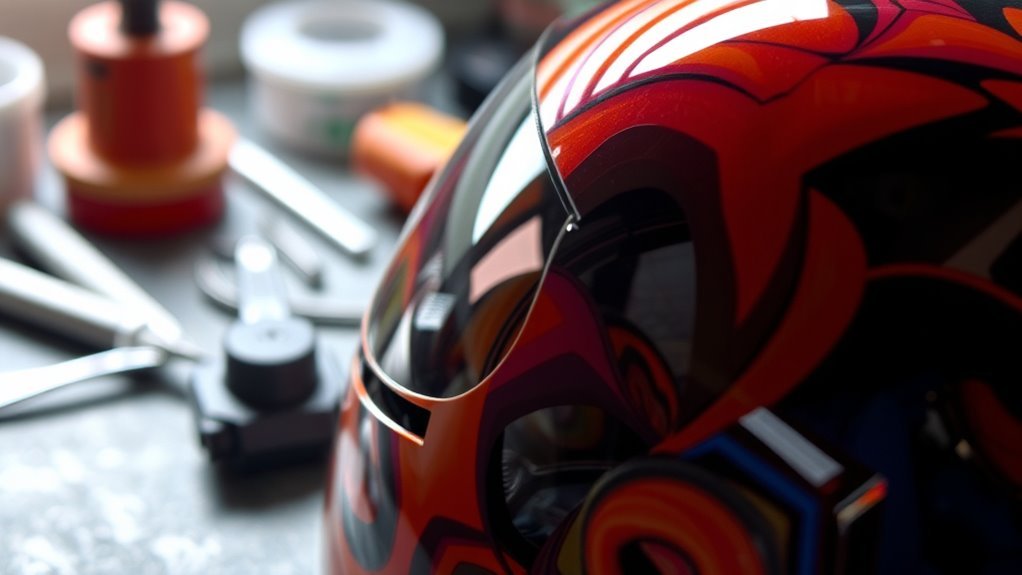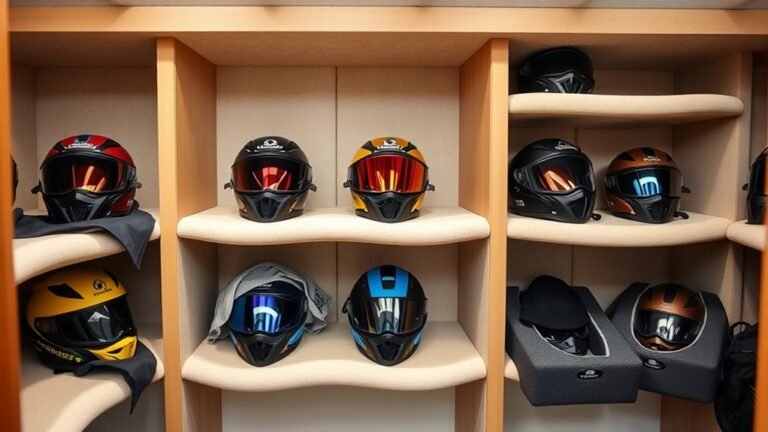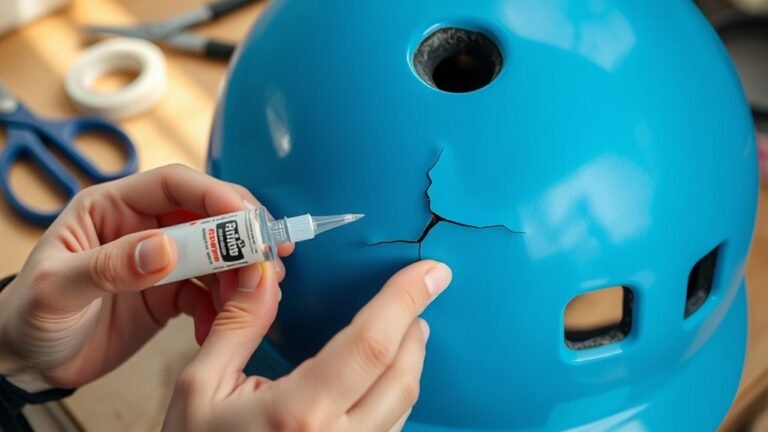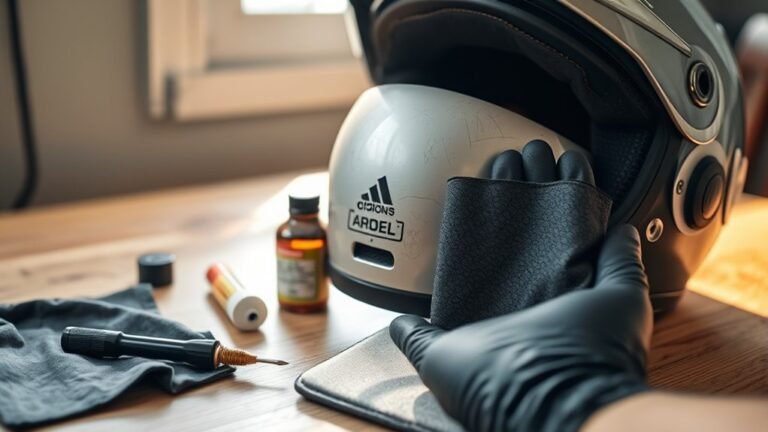Using Thermoplastics in Helmet Crafting
Using thermoplastics in helmet crafting notably enhances safety and comfort for riders. Materials like polycarbonate and nylon are lightweight yet strong, providing superior impact resistance and energy absorption. Molding techniques such as injection molding and vacuum forming allow for precise designs, optimizing both aesthetics and structural integrity. Additionally, thermoplastics offer customization options, including various colors and textures. By understanding these elements, you can improve your helmet’s performance and style, and there’s more to discover about maximizing safety features.
Advantages of Thermoplastics in Helmet Design

When considering helmet design, the advantages of thermoplastics become immediately apparent due to their unique properties. You’ll find that thermoplastics offer significant cost efficiency, allowing manufacturers to produce helmets at a lower price point without sacrificing quality. This affordability can broaden access for riders seeking safety gear. Additionally, the inherent weight reduction of thermoplastics enhances user comfort and mobility, which is essential for those craving freedom in their activities. A lighter helmet reduces fatigue during extended wear, promoting longer riding sessions. Moreover, thermoplastics can be easily molded into complex shapes, enabling innovative designs that improve aerodynamics and protection. Overall, the combination of cost efficiency and weight reduction makes thermoplastics an ideal choice in modern helmet crafting.
Key Thermoplastic Materials Used in Helmet Crafting
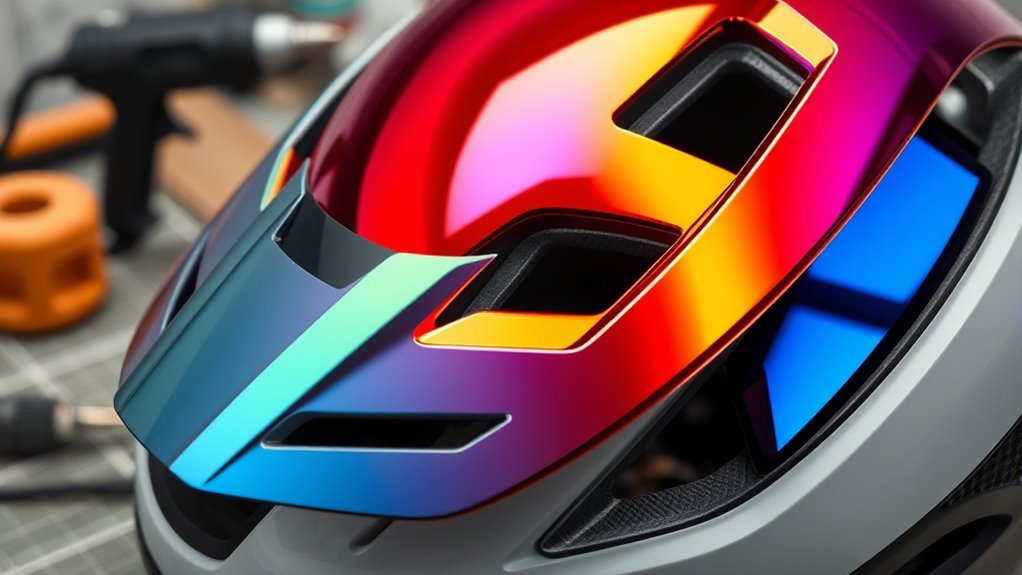
Thermoplastics play a pivotal role in helmet crafting, with several key materials standing out for their performance characteristics. Polycarbonate, known for its excellent impact resistance and lightweight nature, is often chosen for outer shells. Its unique polycarbonate properties allow for superior energy absorption, making it a preferred option in high-impact scenarios. On the other hand, nylon applications are essential for inner linings and straps. Nylon’s flexibility and durability enhance wearability while providing comfort during extended use. Additionally, various blends of these thermoplastics can further refine performance, ensuring helmets meet safety standards without compromising on freedom of movement. By understanding these materials, you can make informed decisions in helmet design and functionality.
Techniques for Molding and Shaping Thermoplastics
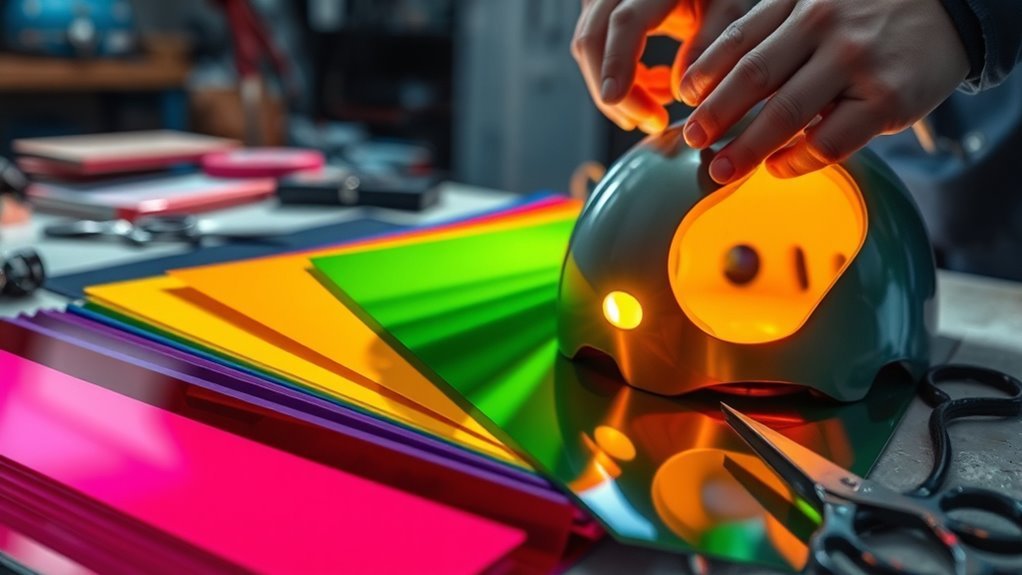
Although various techniques exist for molding and shaping thermoplastics, each method offers distinct advantages that can considerably influence helmet design. You might explore methods like injection molding, which leverages thermoplastic properties to create complex shapes with precision. Alternatively, vacuum forming allows for larger sheets of thermoplastic to be shaped over molds, providing flexibility in design. Another option is thermoforming, where heat softens the material, making it easier to mold into specific contours. These molding techniques not only enhance the aesthetic appeal but also guarantee structural integrity. By understanding these processes, you can optimize helmet design while taking full advantage of the unique characteristics of thermoplastics, ultimately achieving a balance between form and function.
Enhancing Safety Features With Thermoplastics
Molding techniques greatly impact not just the design but also the safety features of helmets crafted from thermoplastics. By utilizing advanced methods like injection molding and blow molding, you can achieve enhanced impact resistance vital for head protection. The specific thermoplastic materials chosen can markedly improve shock absorption, allowing the helmet to better dissipate energy during an impact. This means that in the event of an accident, your helmet can provide superior protection by minimizing the forces transmitted to your head. Additionally, optimizing wall thickness and structural reinforcements within the molding process can further augment safety performance. Ultimately, the integration of these techniques guarantees that your helmet not only looks good but also prioritizes your well-being on every ride.
Customization and Aesthetic Opportunities With Thermoplastics
When considering helmet design, the versatility of thermoplastics opens up a domain of customization and aesthetic possibilities. You can easily manipulate these materials to align with current design trends while exploring a wide array of color choices. This adaptability allows for distinctive helmets that reflect personal style.
| Feature | Options |
|---|---|
| Color Choices | Matte, Glossy, Translucent |
| Texture | Smooth, Textured, Patterns |
| Finishing Touches | Decals, Paints, Vinyl Wraps |
| Functional Add-ons | Visors, Air Vents, Custom Straps |
Embracing these opportunities not only enhances visual appeal but also equips you with the freedom to create a helmet that’s uniquely yours.
Frequently Asked Questions
How Do Thermoplastics Compare to Traditional Helmet Materials?
Thermoplastics offer significant advantages over traditional helmet materials, particularly in weight reduction and impact resistance. Their manufacturing processes, such as injection molding, allow for complex designs that can enhance safety features. While traditional materials might provide durability, thermoplastics can be engineered for flexibility and comfort, adapting better to various impacts. This shift not only improves performance but also grants you the freedom to explore innovative helmet designs without compromising safety.
Are There Any Environmental Concerns With Thermoplastic Use?
Yes, there are environmental concerns with thermoplastic use. While they can be recycled, the production process often involves fossil fuels, leading to carbon emissions. To mitigate this, you might explore sustainability practices that prioritize eco-friendly alternatives, such as bioplastics or recycled materials. These options can reduce your ecological footprint while still providing the necessary performance. Balancing innovation with environmental responsibility is essential for a more sustainable future in helmet crafting.
What Is the Lifespan of Thermoplastic Helmets?
Just like a sturdy tree weathering storms, thermoplastic helmets offer durability but aren’t immune to aging. Typically, you’ll find their lifespan ranges from 3 to 5 years, depending on usage and care. As thermoplastics age, they can lose structural integrity, so it’s essential to inspect your helmet regularly. Over time, exposure to elements can compromise its protective qualities, urging you to prioritize safety and replace it when necessary, ensuring your freedom remains intact.
Can Thermoplastic Helmets Withstand Extreme Temperatures?
Yes, thermoplastic helmets can withstand extreme temperatures to a degree, but their performance varies by material. They typically exhibit good temperature resistance, though excessive heat can lead to heat absorption, causing deformation or loss of protective integrity. It’s essential to take into account the specific thermoplastic used and its rating for heat exposure. Ultimately, while they offer some resilience, prolonged exposure to extreme temperatures may compromise their effectiveness and safety. Always check manufacturer guidelines for limits.
How Are Thermoplastics Recycled After Helmet Use?
Thermoplastic recycling after helmet use involves several steps. First, you should guarantee proper helmet disposal by following local recycling guidelines. Many facilities can process thermoplastics, breaking them down into reusable materials. The recycling process typically includes shredding, melting, and reforming the thermoplastics into new products. By participating in thermoplastic recycling, you contribute to sustainability and reduce waste, allowing these materials to have a second life instead of ending up in landfills.
